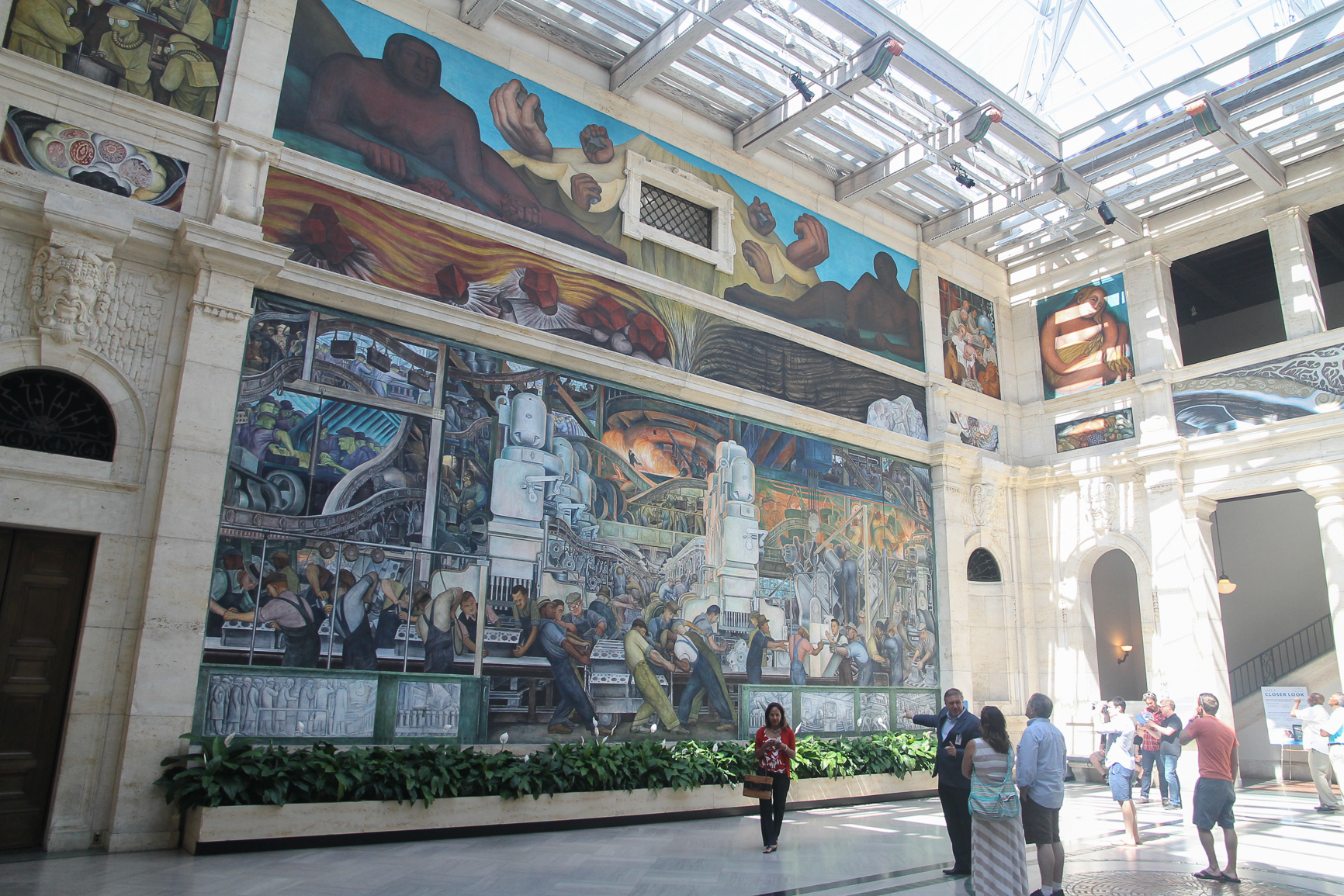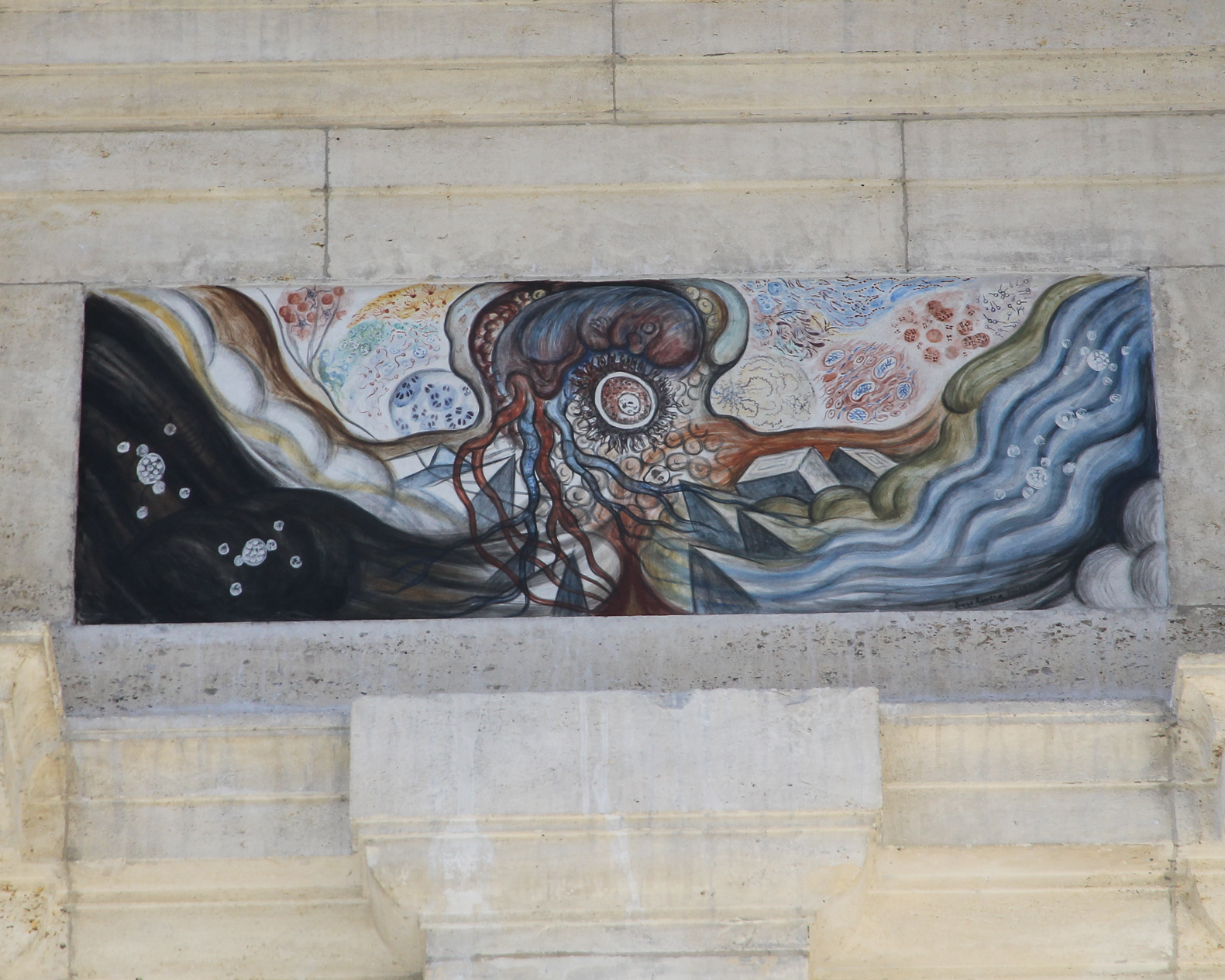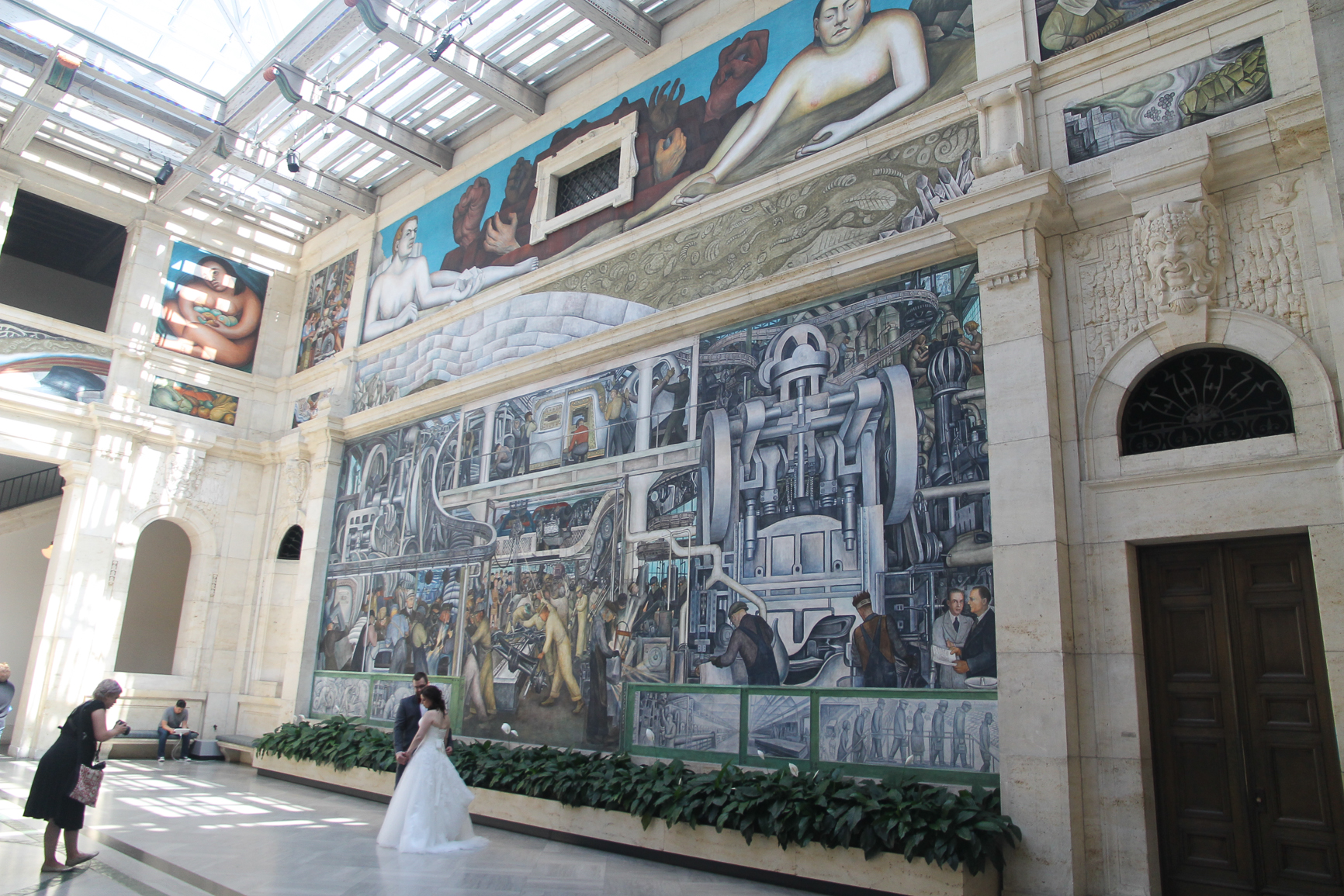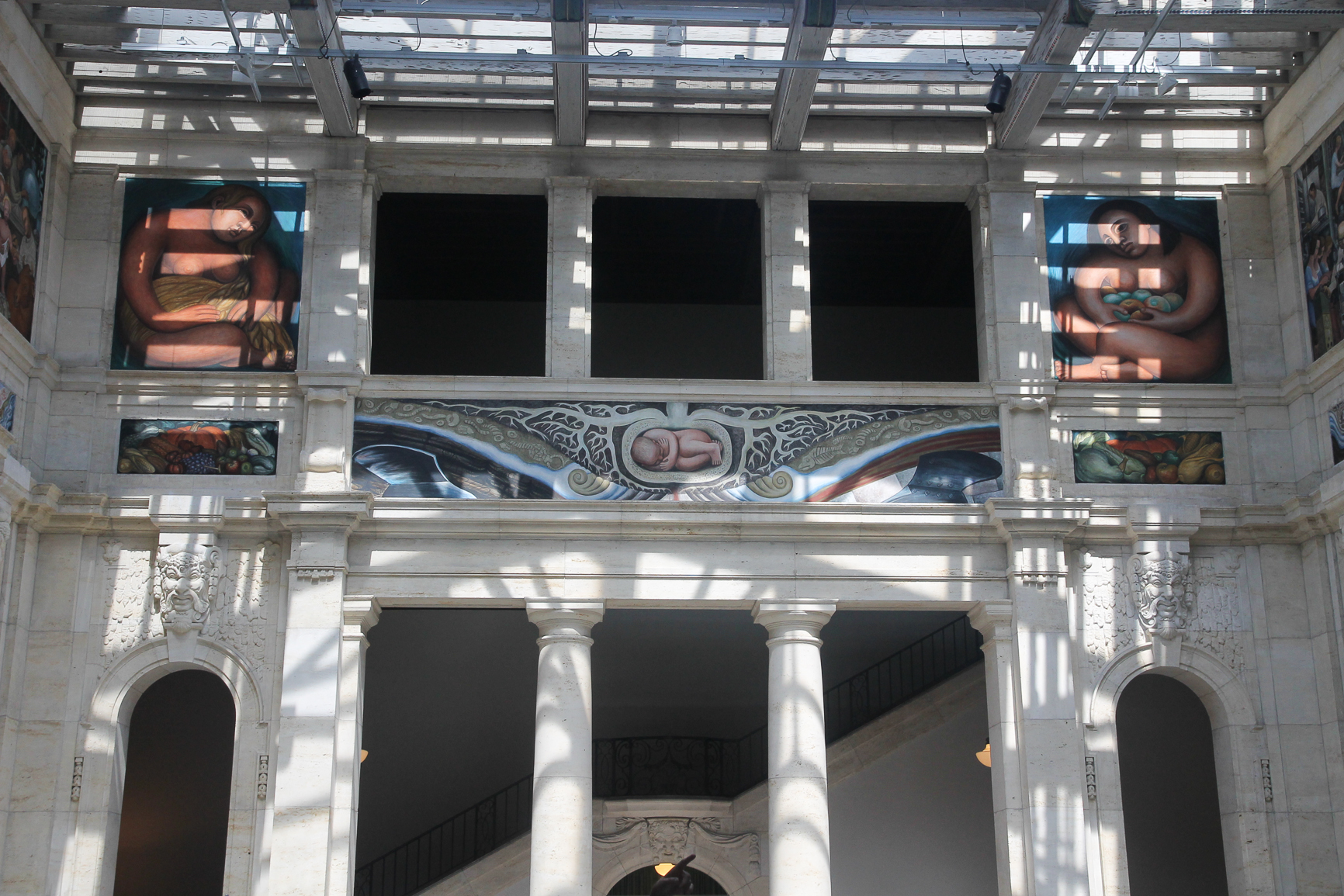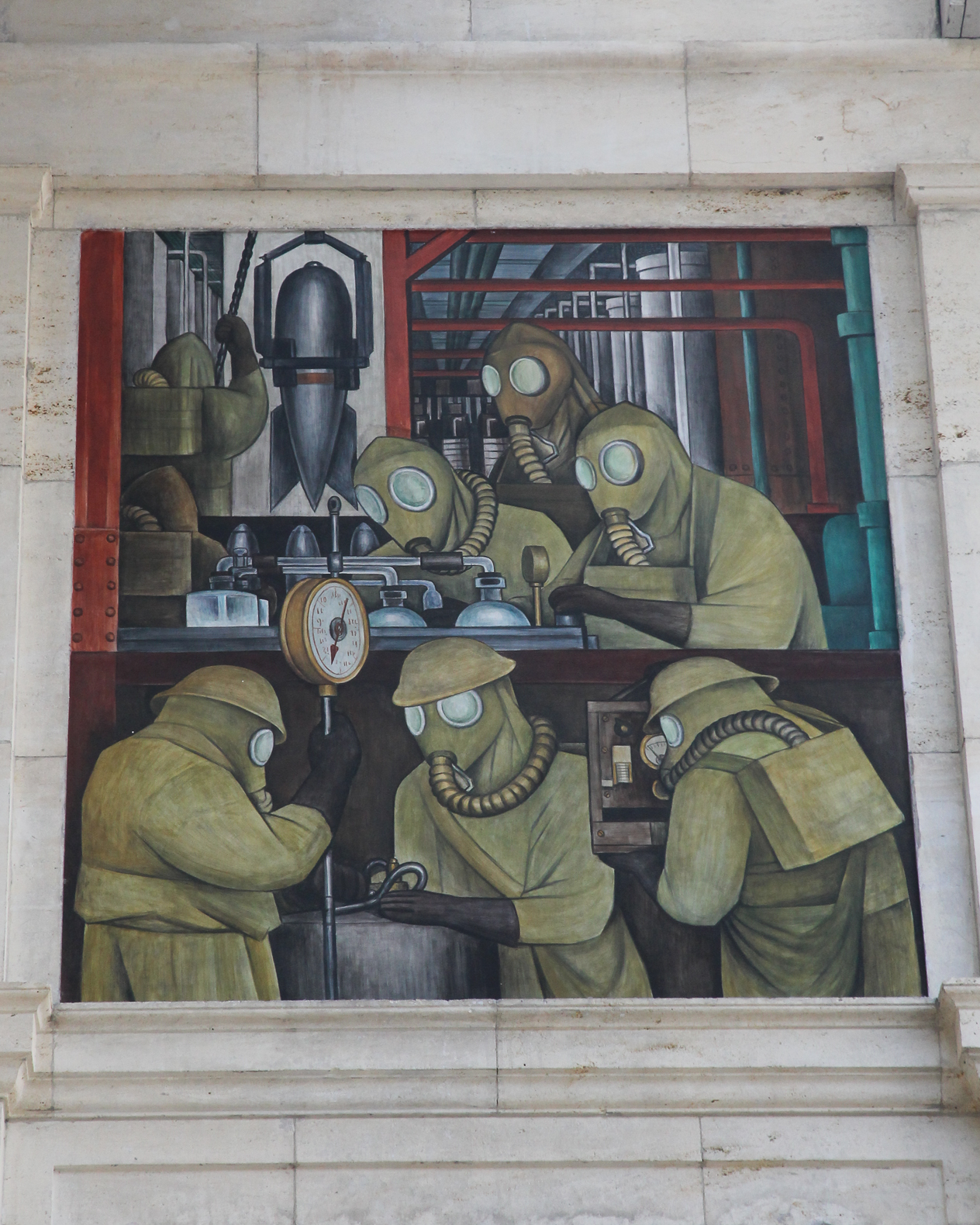July 2015. My first visit to Detroit.
I was there to see my friend Robert (Bob) Allen, who is a reporter for the Detroit Free Press. He’s been one of my favorite writers since we both wrote for the O’Colly during our time at Oklahoma State. After college he went off to Colorado to enjoy life and write about weed legalization. He did great reporting, won some awards and decided it was time for a new adventure, so he packed up and moved north to a city full of interesting stories to tell.
Bob, his then-girlfriend (now wife) Rachel and I had spent Friday night checking out the local beer scene, while also visiting Michigan Central Station and the spot where the Tigers used to play their home games. I stood by home plate (still in the ground) and looked the direction Mickey Mantle once hit a baseball out of the stadium. There were no grandstands, but a chain link fence where right field ended. The downtown skyline clearly visible. We ate coneys at Lafayette and continued sight seeing into the early hours of Saturday morning. Part of our Friday adventure resulted in a story Bob published a couple weeks later. I provided the photos.
As we ended our tour just outside their apartment, we visited with random people, including a very friendly woman who chained smoked cigarettes and wanted to know all about Oklahoma. Prostitutes, homeless residents, drug dealers and consumers as well as drunken partiers congregated at the base of a statue of Hazen S. Pingree, who was a Republican four-term mayor of the city in the late 1800s and then governor. Once inside the apartment, and still buzzing with adrenaline, I sat at the window and looked down 12 stories at the scene of people at a statue for a while longer. Eventually a group of drunken bachelorette partiers tried to start some conversations and failed, finally moving on. “She’s getting married tomorrow” one of them kept yelling. That’s when I called it a night. I listened to the window unit whir as it pushed cold air into the room until it lulled me to sleep.
I maybe slept five hours.
Bob had a river race of some sort to cover and then I think he worked on a story about neighborhood residents taking it upon themselves to fill potholes. Rachel had to report to work as well. Bob said after his work he’d take me on a tour of the murals the city commissioned Shepard Fairey to paint throughout downtown.
I had a beautiful day to explore more of the city of on my own.
Anytime I go to to a major city, I try my hardest to visit an art museum. If I can’t, I at least do a historical tour of some sort. Detroit is home to one of the best (and biggest) art collections in the country. The Detroit Institute of Arts has more than 65,000 pieces in more than 100 galleries.
I left his apartment (located by the ballpark the Tigers now call home and the Fillmore theater) and walked about 20 blocks along Woodward Ave into midtown. I passed low-income housing and churches. Encountered people from all walks of life.
Businesses new and long gone, a broken sign and vacant space the only things left.
I walked on to the Wayne State University campus and couldn’t help but think about Batman and how he too would like Detroit. (For sure not an original thought.)
I had reached my destination where I was greeted by a casting of Rodin’s “The Thinker” at the base of the steps leading to the museum’s main entrance.
I entered and soon met Howdy Doody, examined works by Tintoretto, Monet, van Gogh, Picasso, O’Keefe, Warhol and more. It was overwhelmingly awesome.
Before that day this is what I knew about Diego Rivera: He was a Mexican painter who married Frida.
I’ll never forget the moment I walked into the courtyard he spent countless hours painting in the 1930s.
It felt as if the sun was using extra energy to shoot rays through the skylight to spotlight the massive frescos that told the story of the city’s industrial prowess through depictions of Ford Motor Company.
My camera at my side, I did slow laps around the room taking it all in. I let Diego introduce himself and tell me his story. I studied the people working in an industrial jungle of pipes and machines. The depth of the portraits made it feel as if you could take a step into the wall and walk into the factory.
I could hear the steam bursting from pipes throughout the room. I could feel the heat radiating from the machinery and the furnaces blasting in the back. The smell of sweat amongst the sounds of manufacturing. I saw the cars moving on the assembly line.
There were scientists working to find the latest breakthrough. An angelic child among farm animals getting vaccinated.
I had spent my first 33 years looking at lots of art, but I had never seen anything like this work. I spent more than half an hour in the room. I knew there was no way to see everything in the museum in one day, and I didn’t want to part from Diego. I could have spent three hours. In all honesty, I still spend a lot of time in that room.
I imagined him standing on scaffolding painting the cosmic scenes above the factories. Granted at the time my imagination created an image more resembling Alfred Molina, who played the painter in “Frida.”
Before leaving the space I snapped a handful of photos.
That moment has stuck with me. I sometimes return to photos of the room when I need some inspiration. I sometimes return to it in my dreams.
The work is called “Detroit Industry Murals.” It comprises 27 paintings created by Rivera from 1933-1934 after being contracted by Edsel Ford, the lone son of Henry.
Realizing how much those murals mean to me and how often I’ve returned to them for inspiration, I finally decided to read his autobiography, “My Art, My Life.”
Diego, like 99.9 percent of all artists, was an eccentric and very interesting individual. His work and political views provided him opportunities to watch Hitler speak to thousands as he started to gain traction, he met with Stalin and was friends with Mussolini. He helped bring Mexican art to the global masses.
In the US, he did commissioned work in San Francisco, New York and Detroit, all leading to outrage due to his political views.
No matter where Rivera worked he mostly focused on the working class. From Mexican indians working the fields to factory workers in Detroit, Rivera shared the stories of those who are often under appreciated and overlooked, but vital to us enjoying our lives.
I realize now we share this passion. I love talking to everyday people about what they do. An artist or a small business owner or a utility worker has my admiration more than those in white-collar settings. Folks who work for themselves carry themselves different. Often it’s the daily worn-down look of someone who just survived 12 rounds in a boxing ring, but there’s also the glint of pride in their eyes that is unmistakable once you see it.
I’m sure it’s because I am a descendant of some hard workers. Farmers and blue collar workers. A dad who used to work to restore electricity during storms. I’m sure it has something to do with me working nonstop since I was 15.
As a small child I would sit by my mailbox and wait for Freddy to deliver our mail. I drew pictures of him and for him all the time. We’d always chat for a second before he’d drive on to the next mailbox and my day would be made. I’m guessing this interaction played a role in my development beyond the fact this was my first day-to-day interaction with someone of a different race.
I have a goal to soon spend time and write about those who make our city operate. Those who pick up the trash and work on our streets, the people overseeing water treatment. I want to write about the jobs and the people that many often look down on. Non-fiction and fiction.
I don’t see them as underdogs. I don’t look down on them. I admire those folks greatly. Many are doing a job most wouldn’t consider doing. I want to spend time with those people and acknowledge their dedication.
Despite his worldwide fame, Rivera never got rich. He claimed he rarely pocketed much money from commission jobs because he paid his assistants well and of course there were the supplies.
Rivera was a nut. He married multiple times, including twice with Frida. He cheated on every partner. Will Rogers never met a man he didn’t like, and the same can be said about Diego and women.
He was a communist, who got kicked out of his own party.
We live in a time when we find ourselves often being forced to attempt to separate art from the artists due to various crimes and controversies. During his time Rivera thrived in controversy. Each work creating feigned outrage that would result in extensive media coverage that if it happened today it’d maybe trend on Twitter for an hour or two.
In his book, Rivera talked about his time in Detroit. I learned more about his time painting the frescoes that mean so much to me. I learned that during his time there, he spent time admiring Ford’s collection of vehicles and other historical memorabilia that I too spent time examining during my first visit to the Motor City.
Reading about how Rivera spent time among the steam locomotives taking in the giant machinery gave me chills, knowing I once stood in the same spots admiring the same piece of history 80 years apart.
When I looked at the locomotives, I imagined the ones with snow plows pushing their way west through the Rockies delivering people and goods to new establishments. I thought about the Chinese and Irish immigrants who built the railways that guided the massive machinery.
It’s been four years since that trip, and now I find myself craving a return trip to see what else he wants to teach me in that courtyard.
I find myself wanting to paint the struggles of man with words.
Thank you, Diego, for inspiring me. I’m really glad we met.
